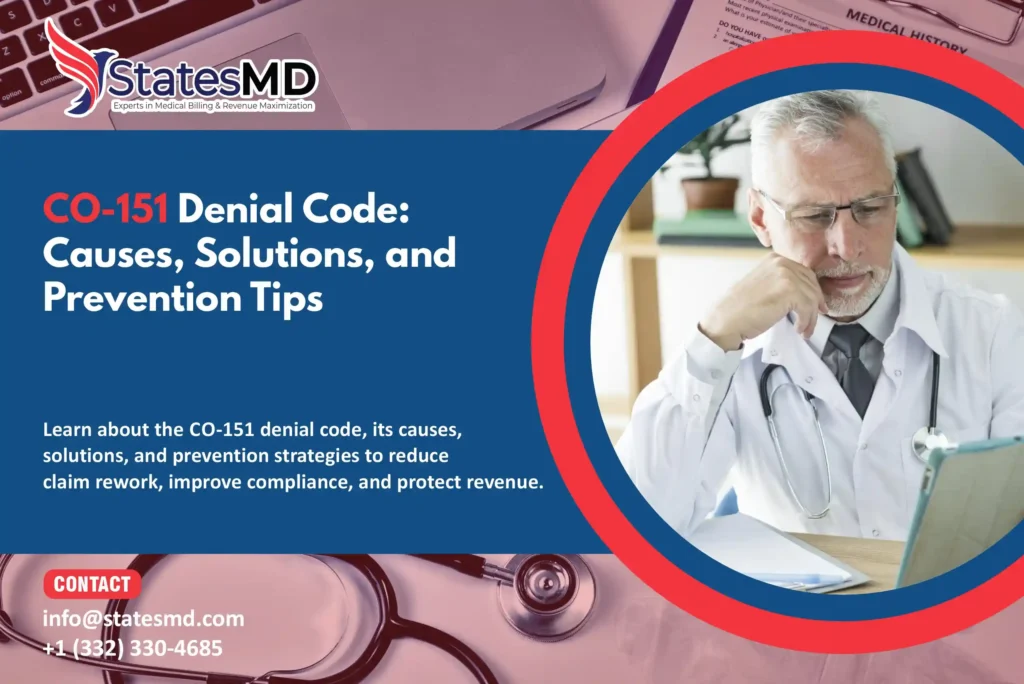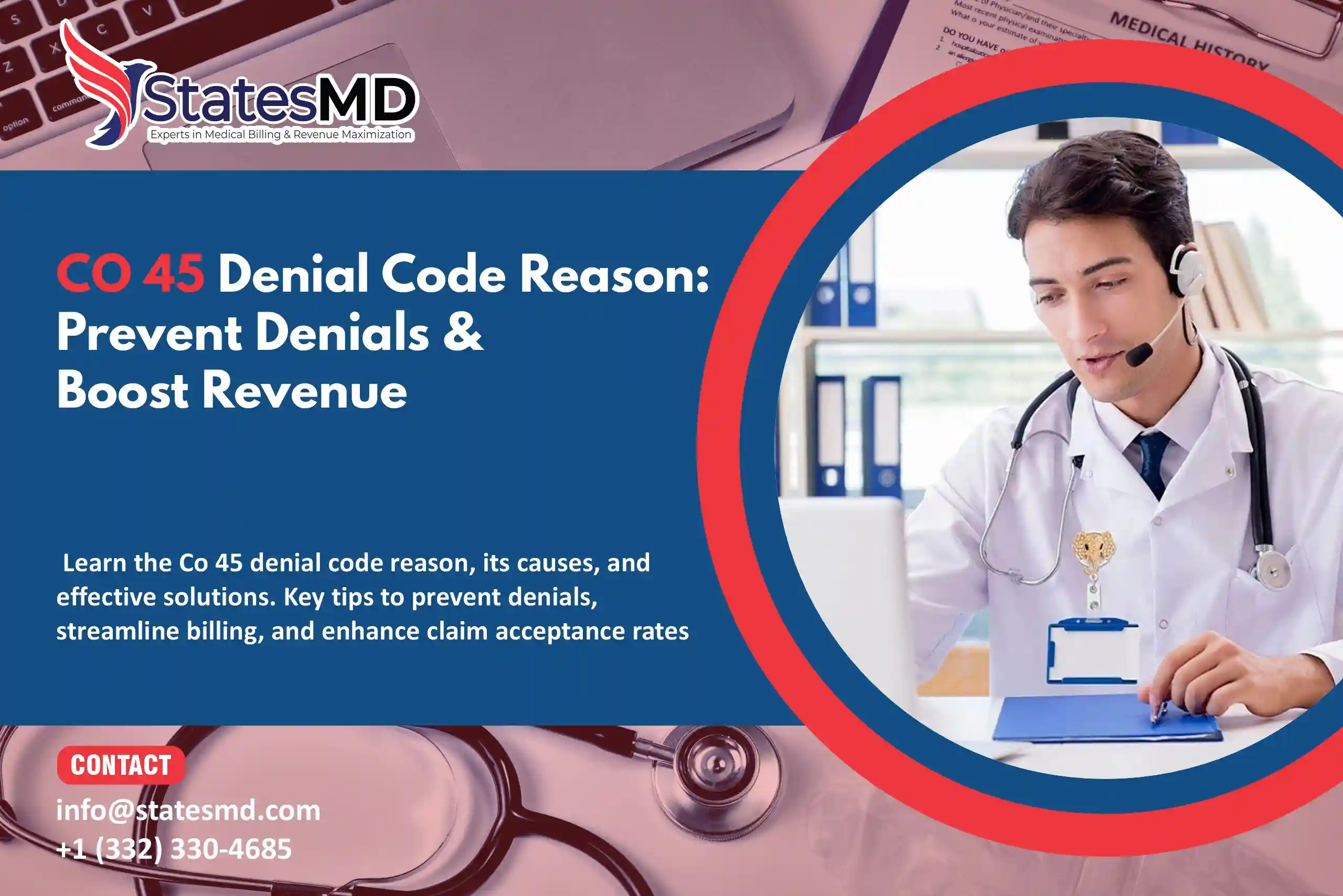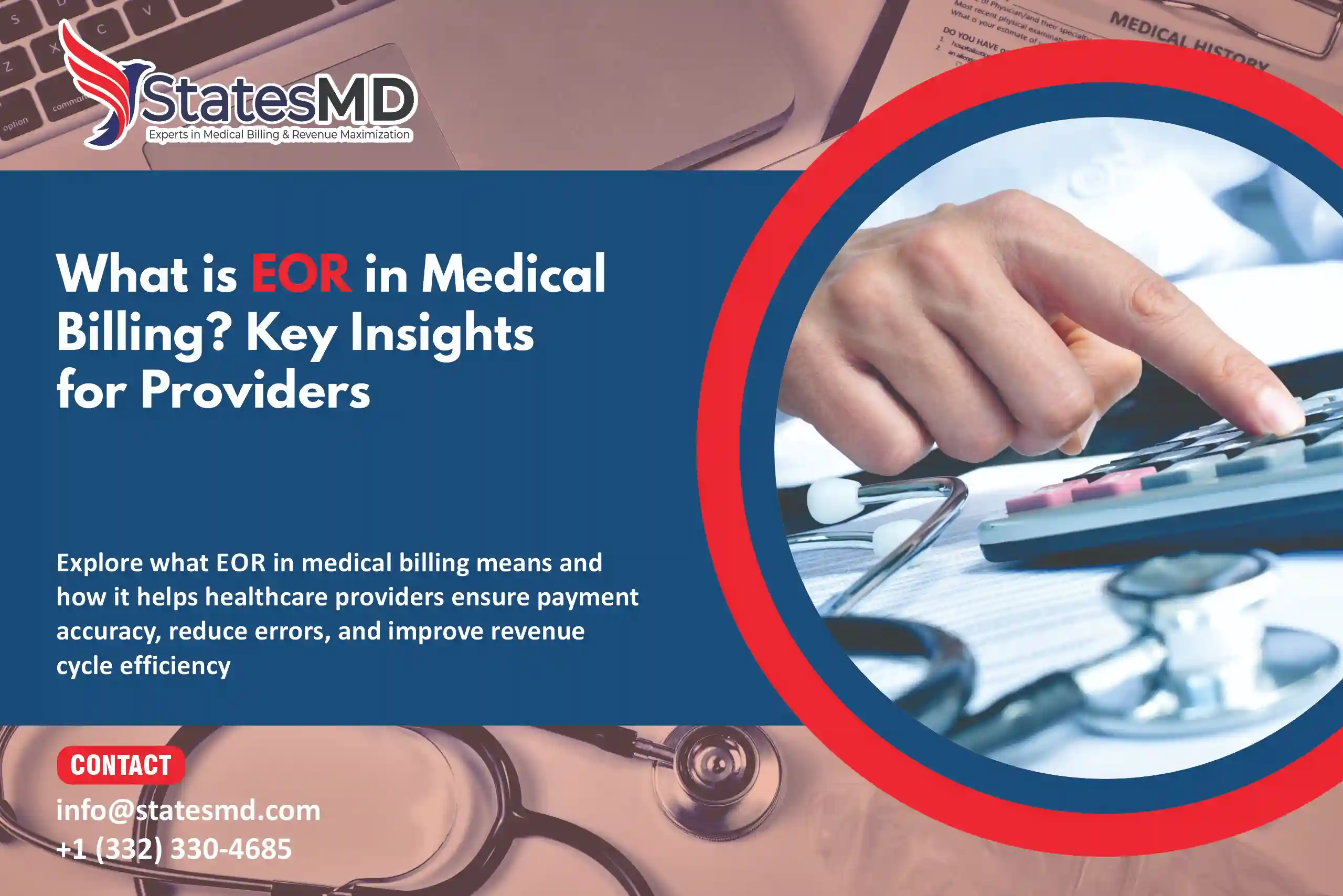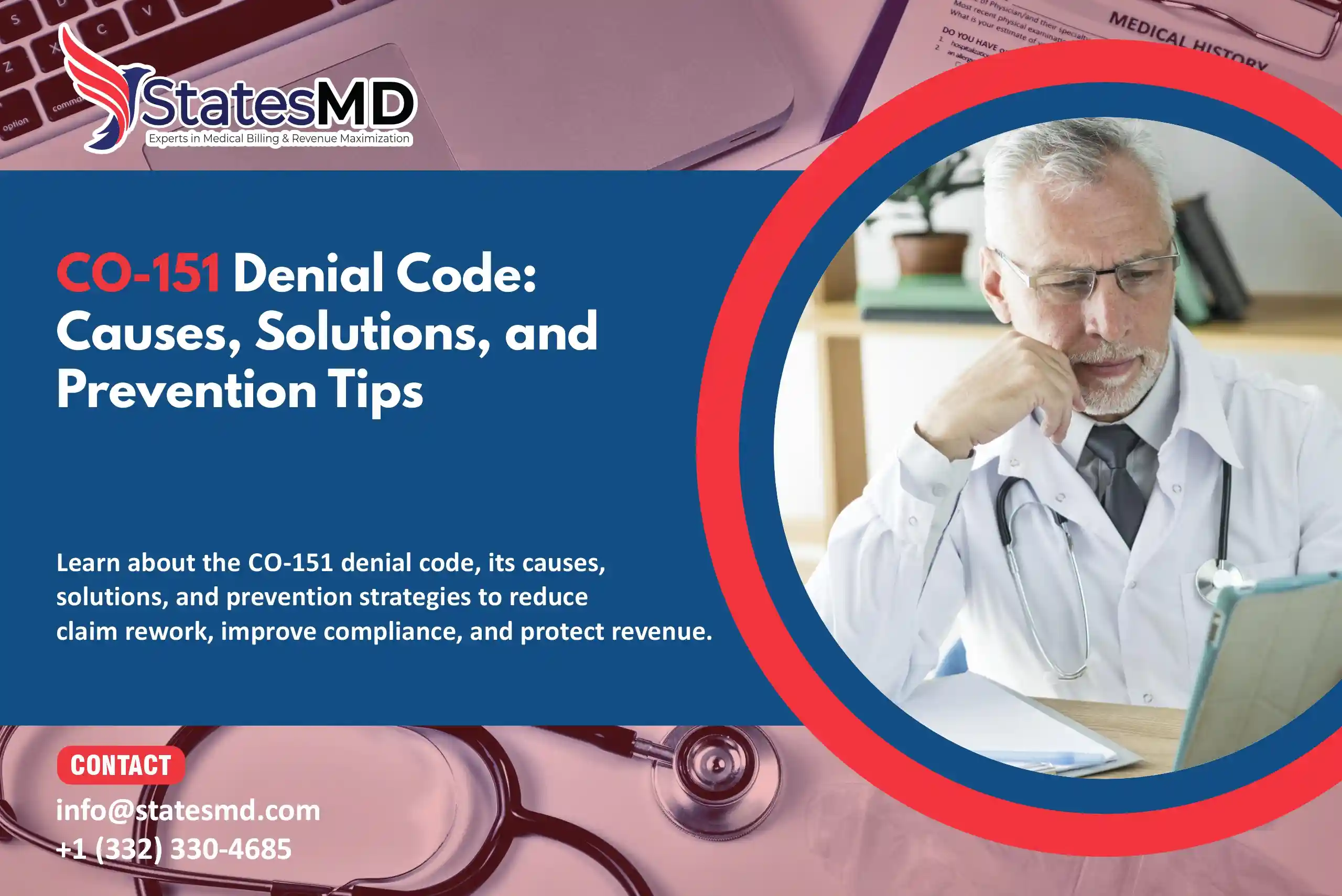Have you ever received a claim denial without completely knowing why? The CO-151 denial code often annoys providers since it indicates that a billed service exceeds the allowed frequency, quantity, or duration under the patient’s coverage. Claim denials cost healthcare providers an estimated $118 billion annually, with CO-151 causing a large expense.
Understanding the causes of CO-151 denials is crucial for healthcare providers to prevent revenue loss and wasted time updating claims. In 2023, the Medical Group Management Association found that around 20 percent of claims are first refused, and correcting rejections can cost up to three times as much as submitting the claim correctly.
This blog offers practical insights and solutions for handling CO-151 denials, assisting healthcare providers, administrators, and revenue cycle specialists in improving the process, reducing denials, and saving money.
What is the CO-151 Denial Code?
When a claim is denied because there is insufficient documentation to justify the quantity, frequency, or duration of services rendered, the payer issues the CO-151 denial code.
Denial Reason:
The principal cause for a CO-151 refusal is that the submitted claim lacks sufficient evidence to substantiate the scope or frequency of the billed services. This may occur for a variety of causes, including:
- Inadequate documentation includes missing or incomplete progress notes, treatment plans, and a lack of precise patient information.
- Excessive frequency or duration: Billed services that exceed the payer’s maximum frequency, quantity, or duration.
- Failure to meet medical necessity criteria: If the services delivered do not meet the payer’s standards for medical necessity or clinical appropriateness.
Examples:
1. A patient’s physical therapist bills for 10 therapy sessions, but the payer only pays for six. The payer issues a CO-151 rejection because there is no appropriate evidence of an absence of proper evidence finding the need for additional sessions.
2. A hospital files a claim for longer in-patient care, but the payer concludes that the services are unnecessary based on the patient’s health and the payer’s guidelines.
Causes of CO-151 Denial Code
Understanding the root cause of the CO-151 denial code is essential in resolving and preventing such denials. Common reasons include poor documentation, coverage limitations, and coding errors.
Insufficient documentation
One of the key causes of the CO-151 denial code is incomplete or inadequate documentation. Payers require precise records to justify the services provided. Examples include:
- Missing progress notes and treatment plans.
- There is a lack of medical necessity data.
- The claim submission has incomplete patient information.
Coverage Limitations
The CO-151 denial code arises when services exceed the terms of a patient’s insurance plan. This can include:
- Services billed beyond the permitted frequency or quantity.
- Exceeding pre-approved treatment durations.
- Claiming non-covered services because of plan exclusions.
Coding errors
Incorrect or inconsistent coding often results in a CO-151 denial. Common errors include:
- Using out-of-date or incorrect CPT or HCPCS codes.
- Failing to include the required modifiers.
- Omitting essential codes that show medical necessity.
Solutions to CO-151 Denials
Resolving CO-151 denials requires an organized approach. Healthcare providers can reduce delays and recover denied payments by identifying the basic problem and assuring proper claim resubmission.
Step 1: Analyze the Denial Notice
Start by carefully reviewing the payer’s Explanation of Benefits (EOB) or Remittance Advice (RA). The primary tasks include:
- Identifying the exact reason for the CO-151 denial code.
- Analyze whether the denial relates to frequency, duration, or quantity limits.
- Check the denial notice with the first claim for defects.
Step 2: Verify the documentation
Ensure that all necessary documentation is complete and meets payer requirements. Focus on:
- Confirming medical necessity using clinical records or treatment plans.
- Checking prior authorizations or approvals for the services given.
- Verify patient coverage information with billing services.
Step 3: Correct and resubmit the claim
Once errors have been properly solved, fix the claim and resubmit it. Steps to Follow:
- Update any incorrect codes, modifiers, or billing information.
- Attach any missing or updated papers needed by the payer.
- Use the proper submission channels to ensure prompt processing.
Step 4: Appeal, if necessary
If the amended claim is still refused, submit an appeal within the payer’s time frame. Key points include:
- Providing a clear explanation for why the claim is valid.
- Provide supporting materials such as clinical notes and coverage policies.
- Monitoring the appeal status to ensure that it is resolved on time.
How To Prevent CO-151 Denials
Addressing the causes of the CO-151 denial code quickly allows smoother claim processing and reduces the risk of revenue loss. Focused prevention measures can save time and increase revenue cycle management efficiency.
Eligibility Verification.
Accurate eligibility checks before providing services are crucial for reducing CO-151 denials. Key steps include:
- Ensuring patient coverage limits, including frequency and quantity limits.
- Ensuring that prior authorization is obtained for services when applicable.
- Double-check benefits to make sure they meet medical necessity standards.
Adherence to Payer Guidelines
Each payer has sure coverage rules that must be strictly followed. Steps to Follow:
- Familiarize employees with payer-specific requirements, such as duration and frequency limits.
- Utilize up-to-date coding guides to prevent mistakes in procedure or diagnosis codes.
- Maintain a database of payer policies for easy reference.
Regular Staff Training
Billing and administrative staff that have received proper training can identify and avoid typical errors. Effective training programs should address
- Updates to coding standards and payer policies.
- Best practices for proper claim submission and documentation.
- Handling denials effectively to reduce revenue impact.
Conclusion
Preventing and resolving CO-151 denials is essential for saving income and reducing claim rework. Understanding the causes, like insufficient records is the first step. Proactive procedures, such as eligibility checks and adherence to payer requirements, help to avoid denials. Accurate claim submission and timely changes reduce delays. Regular staff training increases compliance and improves outcomes. With these measures, suppliers can streamline operations while maintaining financial stability.
FAQs
1. What does the CO-151 denial code mean?
The CO-151 denial code indicates a claim was denied because the billed services exceeded the allowed frequency, quantity, or duration under the patient’s insurance.
2. What are the main causes of CO-151 denials?
Common causes include insufficient documentation, exceeding coverage limits, and coding errors such as outdated CPT codes or missing modifiers.
3. How can I resolve a CO-151 denial?
Review the payer’s Explanation of Benefits, verify documentation, correct errors, and resubmit the claim or appeal with proper evidence if necessary.
4. How can healthcare providers prevent CO-151 denials?
Perform accurate eligibility checks, adhere to payer guidelines, and ensure proper staff training on documentation and coding requirements.
5. What documentation is required to avoid CO-151 denials?
Comprehensive progress notes, treatment plans, prior authorizations, and evidence of medical necessity are critical to support the claim.




